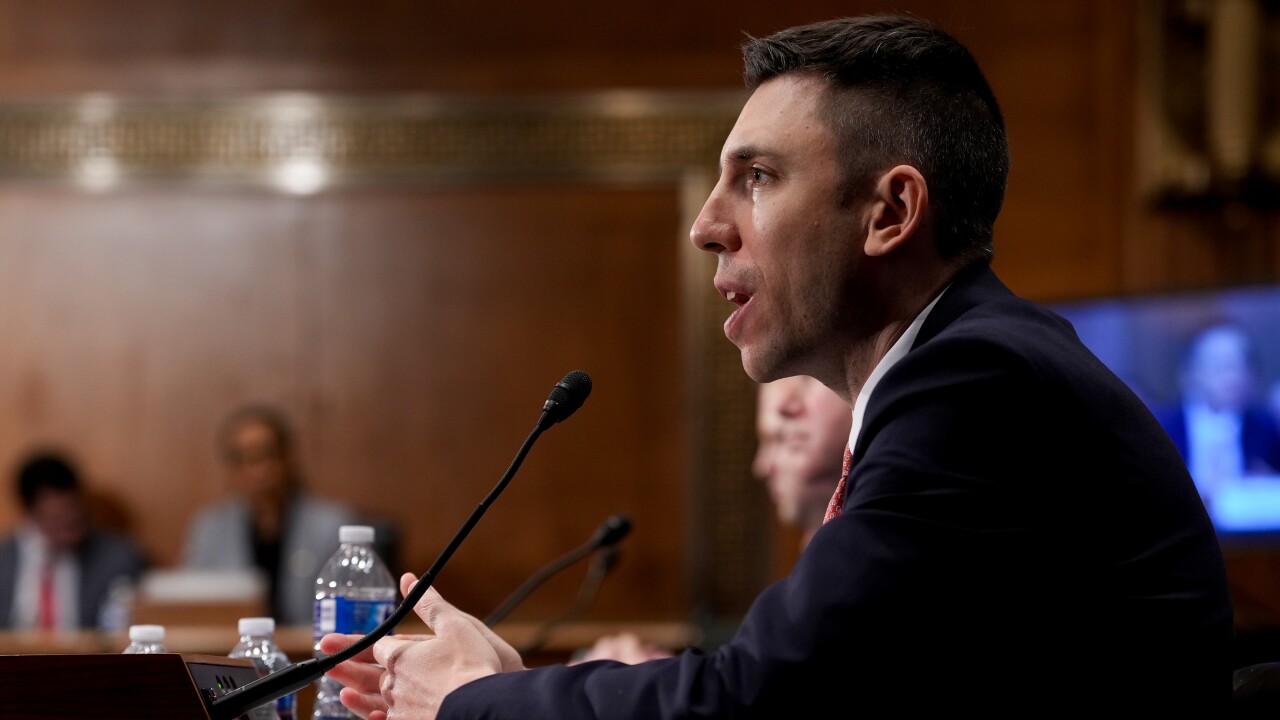
In the race to recovery, several regional banking companies are distancing themselves from the pack.
The entire industry still faces serious challenges, but analysts say these five companies are beginning to stand out: BB&T Corp., M&T Bank Corp., PNC Financial Services Group Inc., TCF Financial Corp. and U.S. Bancorp.
There are several criteria for separating leaders from laggards, including credit quality, capital levels, loan growth and regulatory risk. But no matter how they cut the data, market watchers frequently identified the same five banking companies as having scraped through the crisis to get ahead the past two years.
"These guys are playing much more on the offensive front," said Jason Goldberg, an analyst at Barclays Capital.
"Many of these banks are underappreciated by the market. The key for all of them going forward will be to grow their balance sheets and stay profitable."
BB&T, M&T, PNC, TCF and U.S. Bancorp collectively earned more than $5.5 billion in 2009, when many other regionals finished in the red. All but M&T have exited the Troubled Asset Relief Program, freeing them of the government strings that still hamper many rivals.
A key differentiator for U.S. Bancorp, TCF and BB&T, one that became clear during quarterly reports, was their ability to lend at a time when many competitors are feeling pressure to shrink their balance sheets. U.S. Bancorp's loan portfolio grew 5.3% in the fourth quarter compared with the third quarter. At TCF, of Wayzata, Minn., the loan book grew 3.2%, and BBT's grew 0.3%.
Walter Todd 3rd, a portfolio manager for Greenwood Capital Associates LLC, said making good loans now will only strengthen those banking companies. "Having loan growth now is huge," Todd said. "For the banks that have the capacity, now is a good environment to make money on traditional spread products."
PNC's loan book shrank by 1.9% during the last quarter of 2009, but analysts like the Pittsburgh company's portfolio, which has a relatively low concentration of commercial real estate loans — the asset category many say poses the greatest risk over the next few years. PNC, with a $157.5 billion portfolio, has the smallest concentration of CRE loans among the big regionals — 14.98%. It was 29% among 15 major regionals at yearend.
William Fitzpatrick, an analyst at Optique Capital Management, said the $269.9 billion-asset PNC seems "well positioned" from a credit perspective, even after digesting National City Corp. in 2008. "Residential exposure now seems more predictable" for banks, he said.
U.S. Bancorp (19.8% of yearend loans) and TCF (22.6%) also have manageable levels of CRE. "Anyone with a low concentration in commercial real estate is a good candidate to keep showing improvement," said Robert Albertson, the chief strategist at Sandler O'Neill & Partners LP.
About a third of BB&T's loans are tied up in CRE, but analysts have largely viewed the Winston-Salem, N.C., company as being able to handle its credit risks. Its net interest margin has expanded, partly thanks to last year's government-assisted purchase of Colonial Bank, which came with generous asset protections from the Federal Deposit Insurance Corp.
M&T's 40% concentration in commercial real estate makes endorsing the Buffalo company "a tough call," Fitzpatrick said, but it has typically maintained sound underwriting.
Albert Savastano, an analyst at Fox-Pitt Kelton Cochran Caronia Waller, said M&T "is still fine" despite high levels of CRE. "They probably will not have the same kind of problems that others have," he said. "Some of it is due to the markets they're in and solid underwriting up front, and some of it involves taking advantage of opportunities," such as the May acquisition of Provident Bankshares Corp. of Baltimore.
Rene Jones, M&T's chief financial officer, made that point during his $68.9 billion-asset company's quarterly conference call. "We had the lowest chargeoff rate among large regional and superregional banks through the third quarter," he said. "Given our underwriting culture, our habit of addressing problem areas proactively, and the trends we see in our criticized-loan portfolio, we believe we'll continue to report strong relative performance in 2010."
Even if credit problems worsen, analysts noted, BB&T and PNC in particular still have strong capital levels — at or above the average for regional banking companies.
M&T, TCF and U.S. Bancorp were below the average among regionals at Dec. 31, but analysts did not raise concerns because the companies have been able to earn money in recent quarters.
The regulatory environment, though less than ideal, largely favors the best-performing regional banks, analysts said.
These companies are likely to dodge the brunt of a White House plan to force big banks out of internal proprietary trading and private equity. U.S. Bancorp provided some insight into the exposure these banks face from regulation, estimating earlier this month that major regulatory changes could cost $400 million to $550 million each year, whether through higher costs or reduced revenue.
"Proprietary trading is not applicable to us," Richard Davis, U.S. Bancorp's chairman and CEO, said during a Feb. 2 conference hosted by Morgan Stanley. "Hedge fund ownership, not applicable to us. Private-equity investments, immaterial at every level."
So what is the game plan for these banking companies this year? BB&T said it plans to do more middle-market and corporate lending, using both its heft and retrenchment by other regional banks to steal share. The $281.2 billion-asset U.S. Bancorp also plans to lend more, taking advantage of its perceived lead to gauge the market and carefully pick its spots for growth. It is a luxury that perhaps can only be fully enjoyed by those several steps ahead of the pack.
"We'll watch, we'll learn, and we'll see what consumers want," Davis said in discussing a patient strategy for the Minneapolis company. "We'll see what other products make sense for them to make sure that they have moments where they can rely on the bank to help them not be embarrassed."





